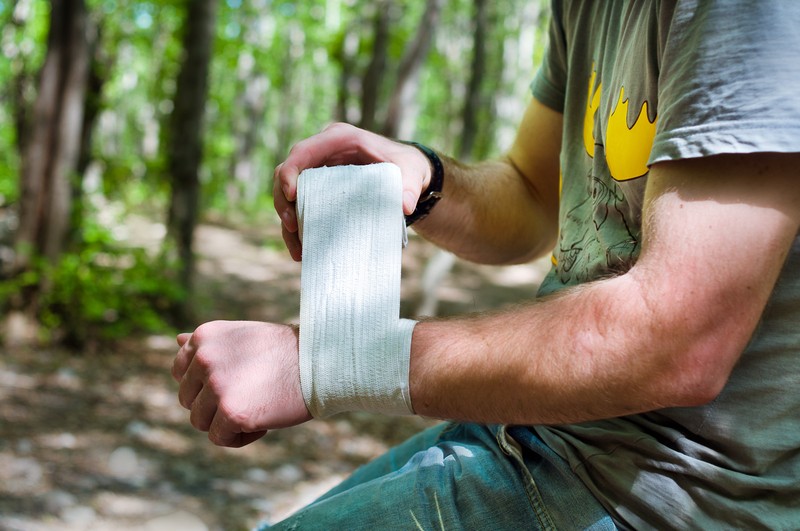Obviously, some injuries require professional, medical attention.
There is a lot you can do, however, with injuries that fall just short of that and it pays to know the basics.
Open Wounds
By taking proper care of the wound you can reduce further contamination and promote healing. Clean the wound as soon as possible after it occurs by–
• Removing or cutting clothing away from the wound.
• Always looking for an exit wound if a sharp object, gun shot, or projectile caused a wound.
• Thoroughly cleaning the skin around the wound.
• Rinsing (not scrubbing) the wound with large amounts of water under pressure. You can use fresh urine if water is not available.The “open treatment” method is the safest way to manage wounds in survival situations. Do not try to close any wound by suturing or similar procedures. Leave the wound open to allow the drainage of any pus resulting from infection.
Cover the wound with a clean dressing. Place a bandage on the dressing to hold it in place. Change the dressing daily to check for infection.
In a survival situation, some degree of wound infection is almost inevitable.
To treat an infected wound –
• Place a warm, moist compress directly on the infected wound. Change the compress when it cools, keeping a warm compress on the wound for a total of 30 minutes. Apply the compresses three or four times daily.
• Drain the wound. Open and gently probe the infected wound with a sterile instrument.
• Dress and bandage the wound.
• Drink a lot of water.Continue this treatment daily until all signs of infection have disappeared.
If you do not have antibiotics and the wound has become severely infected, does not heal, and ordinary debridement is impossible, consider maggot therapy, despite its hazards:
• Expose the wound to flies for one day and then cover it.
• Check daily for maggots.
• Once maggots develop, keep wound covered but check daily.
• Remove all maggots when they have cleaned out all dead tissue and before they start on healthy tissue. Increased pain and bright red blood in the wound indicate that the maggots have reached healthy tissue.
• Flush the wound repeatedly with sterile water or fresh urine to remove the maggots.
• Check the wound every four hours for several days to ensure all maggots have been removed.
• Bandage the wound and treat it as any other wound. It should heal normally.Burns
• First, stop the burning process. Put out the fire by removing clothing, dousing with water or sand, or by rolling on the ground. Cool the burning skin with ice or water. For burns caused by white phosphorous, pick out the white phosphorous with tweezers; do not douse with water.
• Soak dressings or clean rags for 10 minutes in a boiling tannic acid solution (obtained from tea, inner bark of hardwood trees, or acorns boiled in water).
• Cool the dressings or clean rags and apply over burns.
• Treat as an open wound.
• Replace fluid loss.
• Maintain airway.
• Treat for shock.
This is not a comprehensive list by any means, but it covers the basics of what is most likely to happen. It is critical in addition to knowing these skills that you also have a well-stocked first aid kit to help you treat all but the most serious injuries.
To learn more about treating injuries and about what you should have in your first aid kit, please visit Wilderness Survival.

Beautiful